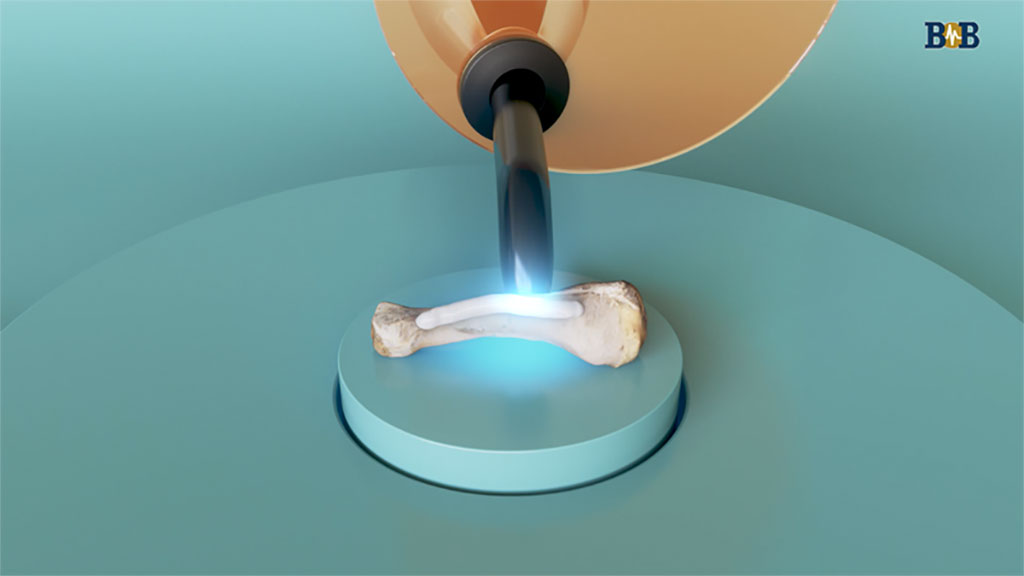Polymer-Based Plating Method Helps Fixate Fractures
By HospiMedica International staff writers
Posted on 05 Jul 2021
A new surgical system combines screws with a build-up of a polymer/hydroxyapatite composite shaped in situ to enable customized plating of fractures. Posted on 05 Jul 2021
The AdhFix method, developed at KTH Royal Institute of Technology (Stockholm, Sweden), is an open reduction internal fixation (ORIF) system inspired by the rigidity and high bond strength of dental composites. The rapidly curable, biocompatible, high-strength composite consists of hydroxyapatite (HA) and trifunctional triazine–trione (TATO) alkene and thiol monomers. Curing is by irradiation with a high-energy visible (HEV) light, which causes near-complete monomer conversion after just 10 seconds, even under physiological conditions.

Image: A high-strength composite helps mend fractures (Photo courtesy of Professor Michael Malkoch)
The composite material can be applied topologically to bone fractures together with a self-etching primer and shaped in situ before being cured on demand via HEV thiol–ene coupling chemistry. By using alternating layers of AdhFix and medically approved polyethyleneterephthalate (PET) mesh, a fiber-reinforced fixation patch can be constructed. Studies in rabbits and rats have demonstrated the resistance of the TEC composite to soft-tissue adhesions. The study was published on June 18, 2021, in Advanced Functional Materials.
“AdhFix will enable customized plating for fixation of fractures. Collarbone and rib fractures, in particular are ideally suited for the proposed treatment, since such injuries are not easy to stabilize,” said senior author Professor Michael Malkoch, PhD. “No fracture is the same as the other, this is one of the absolute advantages of the material. A surgeon can tailor the fixation plate according to the patient's bone and the structure of the fracture. The hospital also does not have to store metal plates.”
ORIF metal plates provide exceptional support for unstable bone fractures; however, they often result in debilitating soft-tissue adhesions and their rigid shape cannot be easily customized by surgeons. This is a particular problem with finger fractures, where the reported occurrence rate of complications affecting mobility in phalangeal fractures fixated with metal plates is as high as 64%.
Related Links:
KTH Royal Institute of Technology














